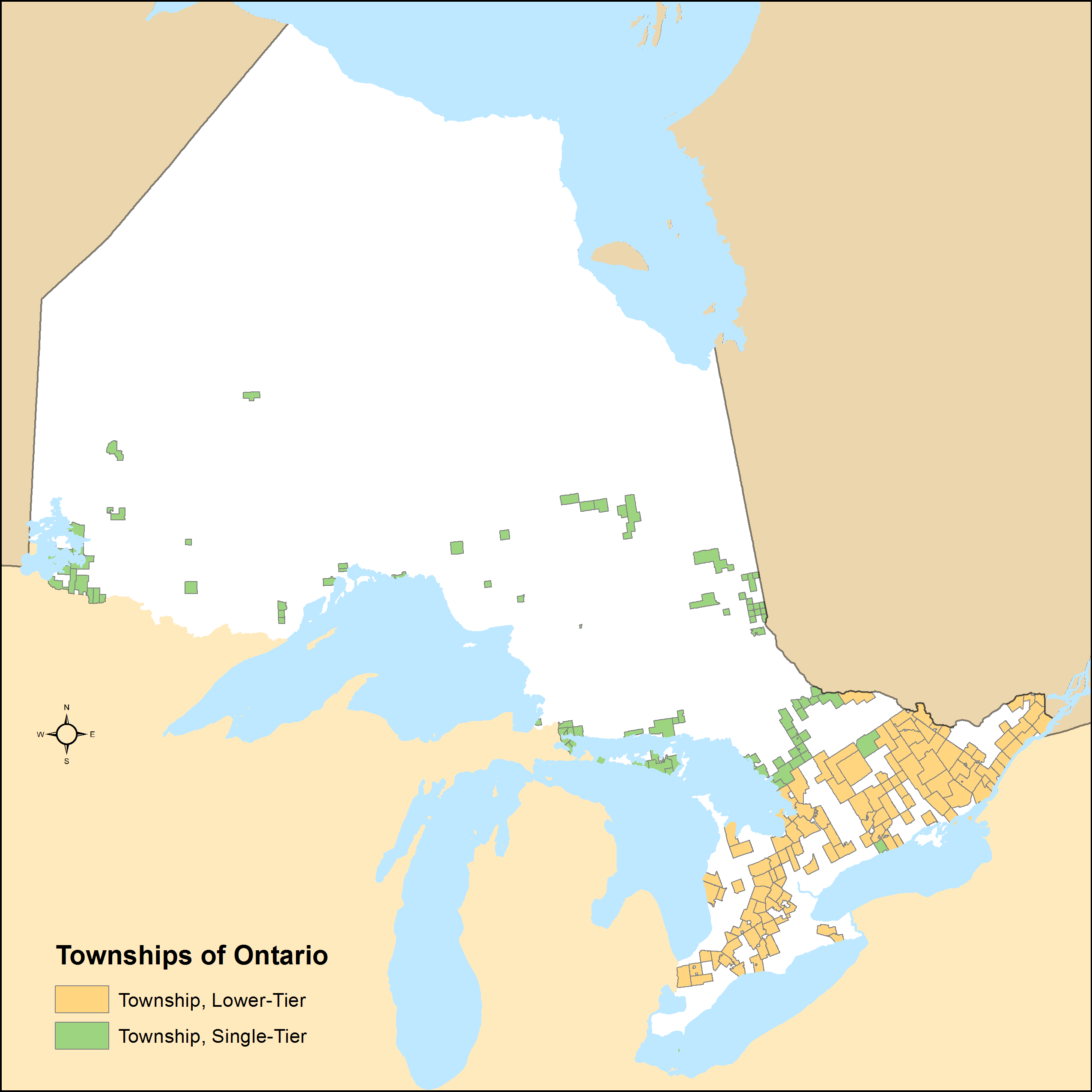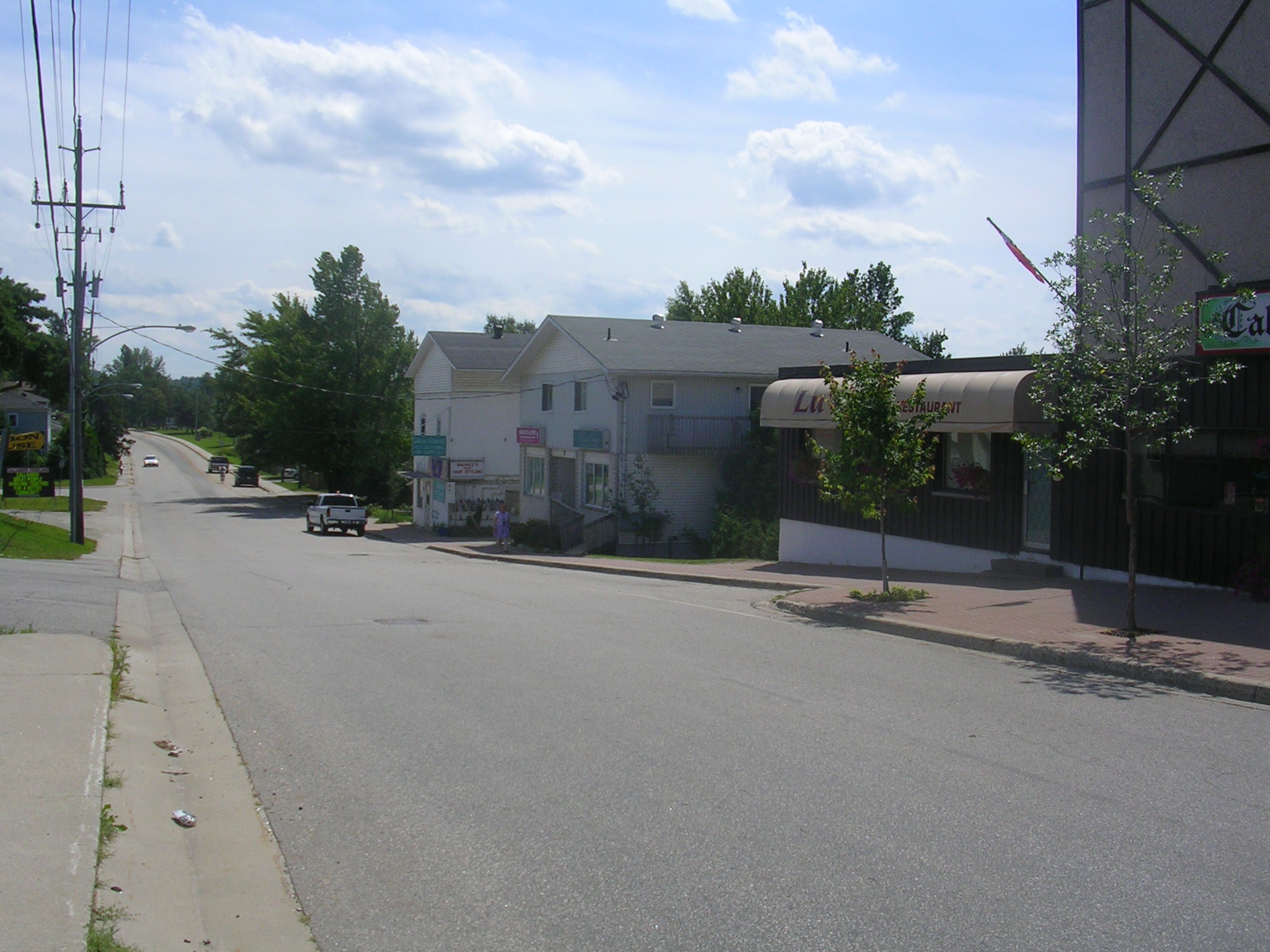|
Armour, Ontario
Armour ( 2021 population 1,459) is a township municipality in the Canadian province of Ontario. Located in the Almaguin Highlands region of Parry Sound District, the township surrounds but does not include the village of Burk's Falls. It was named in honour of Judge John Douglas Armour. Communities The township includes the communities of Berriedale, Carss, Chetwynd, Katrine and Pickerel Lake. Katrine overlooks Doe Lake, which is located on the west side of the village. Three Mile Lake and Deer Lake are located about 5 km east of the village. There is also a small public beach on Doe Lake, and a community centre located on Ontario Highway 11. Demographics In the 2021 Census of Population conducted by Statistics Canada, Armour had a population of living in of its total private dwellings, a change of from its 2016 population of . With a land area of , it had a population density of in 2021. Mother tongue (2006): * English as first language: 92.4% * French as fir ... [...More Info...] [...Related Items...] OR: [Wikipedia] [Google] [Baidu] |
List Of Township Municipalities In Ontario
A township is a type of municipality in the Canadian province of Ontario. They can have either single-tier status or lower-tier status. Ontario has 200 townships that had a cumulative population of 990,396 and an average population of 4,952 in the 2011 Census. Ontario's largest and smallest townships are Centre Wellington and Cockburn Island with populations of 26,693 and 0 respectively. History Under the former ''Municipal Act, 1990'', a township was a type of local municipality. Under this former legislation, a locality with a population of 1,000 or more could have been incorporated as a township by Ontario's Municipal Board upon review of an application from 75 or more residents of the locality. It also provided that a township could include "a union of townships and a municipality composed of two or more townships". In the transition to the ''Municipal Act, 2001'', these requirements were abandoned and, as at December 31, 2002, every townsh ... [...More Info...] [...Related Items...] OR: [Wikipedia] [Google] [Baidu] |
Township (Canada)
The term township, in Canada, is generally the district or area associated with a town. The specific use of the term to describe political subdivisions has varied by country, usually to describe a local rural or semirural government within the country itself. In Eastern Canada, a township is one form of the subdivision of a county. In Quebec, the term is ''canton'' in French. Maritimes The historic colony of Nova Scotia (present-day Nova Scotia, New Brunswick, and Prince Edward Island) used the term ''township'' as a subdivision of counties and as a means of attracting settlers to the colony. In Prince Edward Island, the colonial survey of 1764 established 67 townships, known as lots, and 3 royalties, which were grouped into parishes and hence into counties; the townships were geographically and politically the same. In New Brunswick, parishes have taken over as the present-day subdivision of counties, and present-day Nova Scotia uses districts as appropriate. Ontario In Ontar ... [...More Info...] [...Related Items...] OR: [Wikipedia] [Google] [Baidu] |
2021 Canadian Census
The 2021 Canadian census was a detailed enumeration of the Canadian population with a reference date of May 11, 2021. It follows the 2016 Canadian census, which recorded a population of 35,151,728. The overall response rate was 98%, which is slightly lower than the response rate for the 2016 census. It recorded a population of 36,991,981, a 5.2% increase from 2016. Planning Consultation on census program content was from September 11 to December 8, 2017. The census was conducted by Statistics Canada, and was contactless as a result of the COVID-19 pandemic in Canada. The agency had considered delaying the census until 2022. About 900 supervisors and 31,000 field enumerators were hired to conduct the door-to-door survey of individuals and households who had not completed the census questionnaire by late May or early June. Canvassing agents wore masks and maintained a physical distance to comply with COVID-19 safety regulations. Questionnaire In early May 2021, Statistics Ca ... [...More Info...] [...Related Items...] OR: [Wikipedia] [Google] [Baidu] |
Canada 2016 Census
The 2016 Canadian census was an enumeration of Canadian residents, which counted a population of 35,151,728, a change from its 2011 population of 33,476,688. The census, conducted by Statistics Canada, was Canada's seventh quinquennial census. The official census day was May 10, 2016. Census web access codes began arriving in the mail on May 2, 2016. The 2016 census marked the reinstatement of the mandatory long-form census, which had been dropped in favour of the voluntary National Household Survey for the 2011 census. With a response rate of 98.4%, this census is said to be the best one ever recorded since the 1666 census of New France. This census was succeeded by Canada's 2021 census. Planning Consultation with census data users, clients, stakeholders and other interested parties closed in November 2012. Qualitative content testing, which involved soliciting feedback regarding the questionnaire and tests responses to its questions, was scheduled for the fall of 2013, w ... [...More Info...] [...Related Items...] OR: [Wikipedia] [Google] [Baidu] |
Ontario Highway 11
King's Highway 11, commonly referred to as Highway 11, is a provincially maintained highway in the Canadian province of Ontario. At , it is the second longest highway in the province, following Highway 17. Highway11 begins at Highway 400 in Barrie, and arches through northern Ontario to the Ontario–Minnesota border at Rainy River via Thunder Bay; the road continues as Minnesota State Highway 72 across the Baudette–Rainy River International Bridge. North and west of North Bay (as well as for a short distance through Orillia), Highway11 forms part of the Trans-Canada Highway. The highway is also part of MOM's Way between Thunder Bay and Rainy River. The original section of Highway11 along Yonge Street was colloquially known as "Main Street Ontario", and was one of the first roads in what would later become Ontario. It was devised as an overland military route between York (Toronto) and Penetanguishene. Yonge Street serves as the east–west divide throughou ... [...More Info...] [...Related Items...] OR: [Wikipedia] [Google] [Baidu] |
Doe Lake (Parry Sound District)
Doe Lake is a lake in Parry Sound District, Ontario, Canada. The lake is composed of three sections and as such known locally for their size as ''Big Doe Lake'', ''Middle Doe Lake'', and ''Little Doe Lake''. Doe Lake is the largest lake in the Almaguin Highlands area of the Magnetawan River system. The communities of Katrine and Doe Lake can be found on the Lake. The community of ''Katrine'' has a small marina and is found on the ''Little Doe'' section of the lake. However ''Doe Lake'' is a classified as a dispersed rural community found in the area. Many cottages can be found on the lake as well as rental cottages and camping resorts. Summer Camps Various summer camps operate or have operated on the lake. These camps include: *Doe Lake Girl Guide Camp ( Girl Guides of Canada) **Founded in 1949 on 625 acres **The Doe Lake Girl Guide Camp is held every summer with girls travelling to the camp from across Ontario, and other parts of Canada. *Big Doe Camp Girl Guides and ... [...More Info...] [...Related Items...] OR: [Wikipedia] [Google] [Baidu] |
Burk's Falls
Burk's Falls is an incorporated village in the Almaguin Highlands region of Parry Sound District, Ontario, Canada, located north of Toronto and south of North Bay, Ontario. The village, and the waterfall on the site, were named (for himself) by David Francis Burk of Oshawa, after he selected the land surrounding the waterfall in the Free Land Grant Act. Burk's Falls is part of the Magnetawan River waterway. Geography Located about west of Algonquin Provincial Park in picturesque cottage country, Burk's Falls is at the intersection of Ontario Highway 11 and the Magnetawan River. It is an enclave within Armour Township. The area is set amid the fresh-water bodies that make Northern Ontario famous; the largest of which are Horn Lake to the Northwest, Pickerel Lake to the Northeast, Three Mile Lake to the Southeast, and the joined Doe and Little Doe Lakes to the Southwest. History The area around Burk's Falls was first settled by loggers during the 1860s. At that time, the on ... [...More Info...] [...Related Items...] OR: [Wikipedia] [Google] [Baidu] |
Almaguin Highlands
The Almaguin Highlands Region (colloquially known as Almaguin, also referred to as 'the Highlands') in Ontario, Canada, covers approximately comprising the eastern half of Parry Sound District. It is bounded by Muskoka in the south, and by Lake Nipissing and Nipissing District in the north. The eastern edge abuts the western boundary of Algonquin Provincial Park, whereas the western boundary of the Almaguin Highlands is generally regarded to be the mid east-west point of Parry Sound District. Originally derived from the words Algonquin, Magnetawan, and Seguin. the name Almaguin is now used to describe the marketing region of East Parry Sound. Subdivisions The region includes fifteen incorporated municipalities, three local service boards (LSB) across eight unincorporated geographic townships, and one unincorporated geographic township without a local services board, which can be grouped into three subregions. North Almaguin * Municipality of Callander * Township of Nipiss ... [...More Info...] [...Related Items...] OR: [Wikipedia] [Google] [Baidu] |




